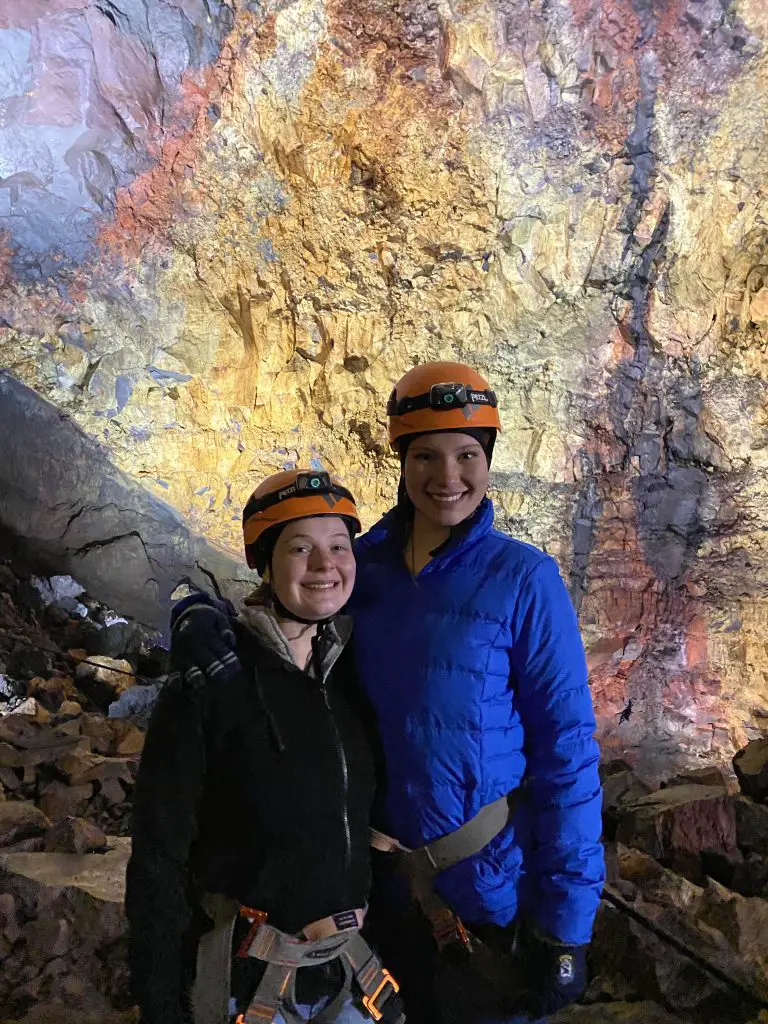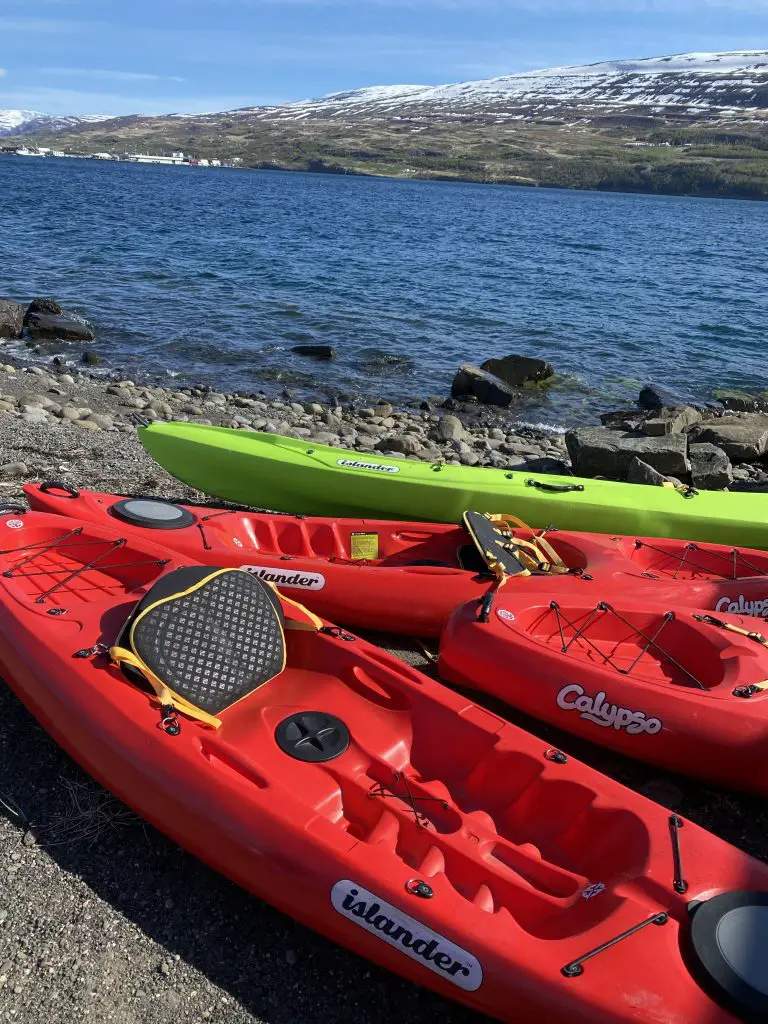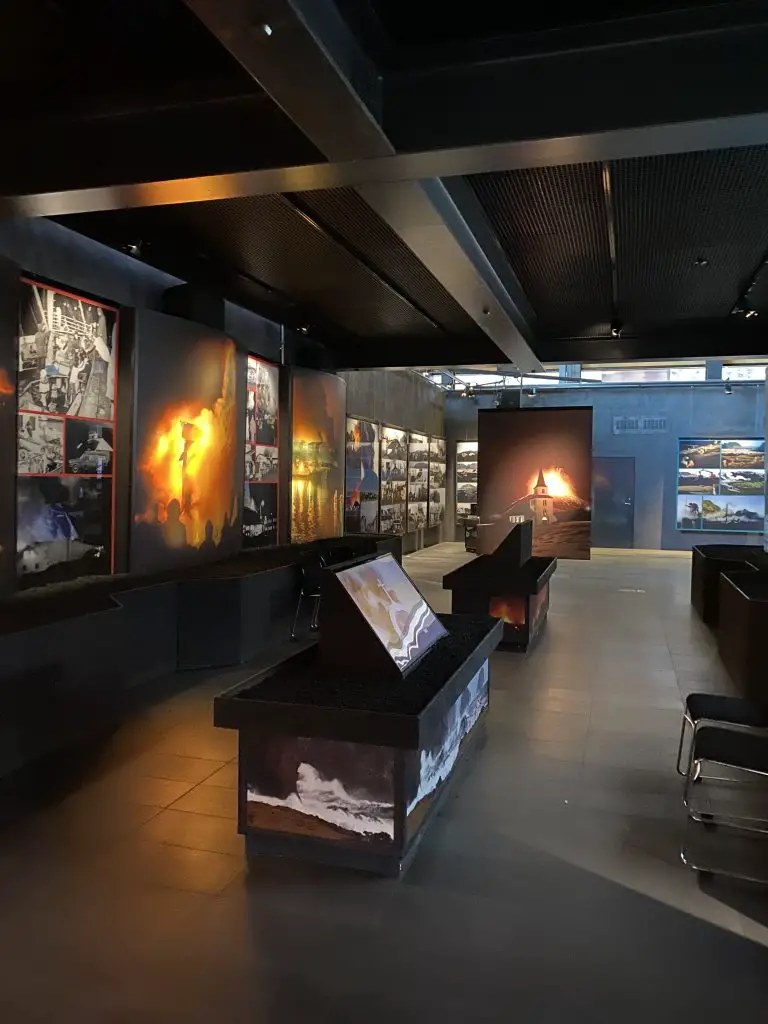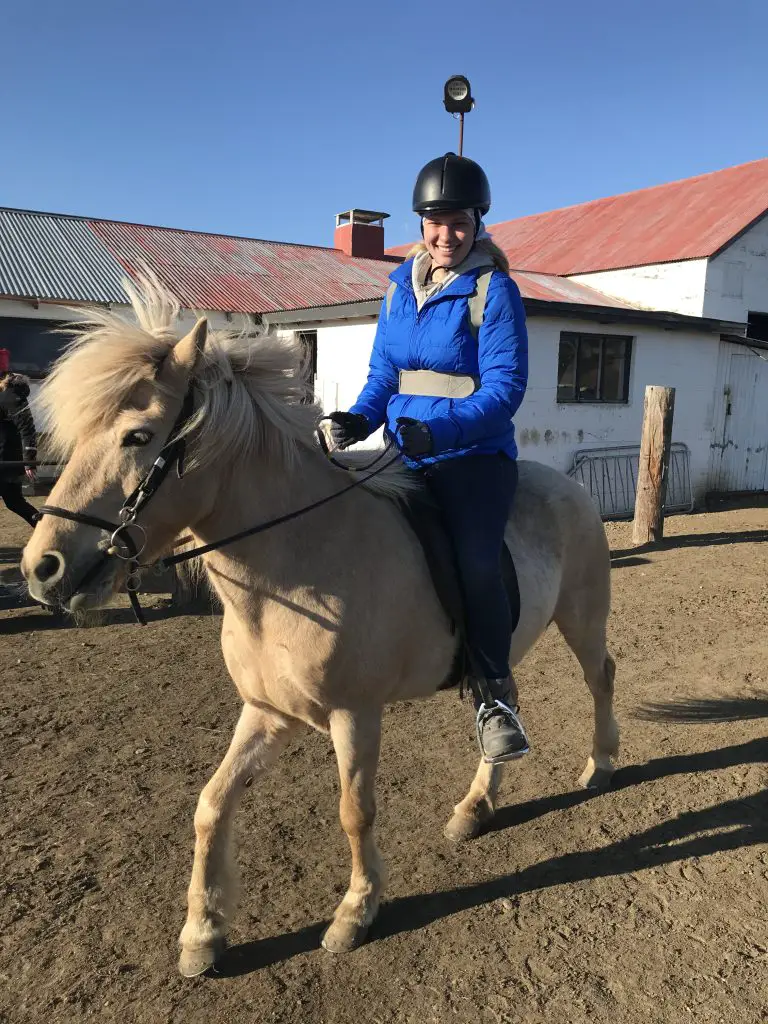Why not start this blog with the place that started it all for me: Iceland! Having spent time both as a tourist and temporary resident in this country while studying abroad during my undergrad, I’ve got lots of fun tips for y’all. In addition to being one of my favorite places on earth, Iceland also has the added benefit of being a unique place both culturally and geologically, meaning it’s easy to find amazing things to do that you’re not going to find in other places. With that said, it would be impossible to fit everything I have to say about my favorite frozen island into just one post, so here are a few unique highlights I don’t think get talked about enough. Now, let’s to get started started answering our question:






Þríhnúkagígur Volcano
A trip to the center of the earth!
Did you know that when volcanoes are finished being active, they generally collapse in on themselves and produce depressions known as calderas? As a geologically young area with lots of volcanic activity, Iceland has calderas all around. Famously, along the Golden Circle route many guests to Iceland visit Kerið crater, which has either a beautiful blue or frozen lake in the center of it depending on the time of year. But there’s one volcano – Þríhnúkagígur – that breaks from the norm.
Þríhnúkagígur last erupted ~4,000 years ago and is made unique by the fact that after it finished erupting its 700ft high magma chamber stayed hollow. Now-a-days, you can descend the shaft and experience all the amazing rock colors illuminated by giant spotlights that Inside the Volcano has placed at the bottom. You get to crawl over rocks and explore the chamber a bit, or you can stay near the elevator and simply enjoy the view.
Personally, I did this excursion with one of my best friends in the world on the day of my 22nd birthday. It was loads of fun, and definitely something you’re not going to experience anywhere else! The whole trip took about six hours from the time we got picked up in Reykjavík, though you can also drive yourself, to the time we got back to the city. In terms of advice, make sure you wear tennis shoes or similarly sturdy shoes if you do this trip. In addition to good shoes being helpful for exploring the inside of the volcano, they make getting to and from the volcano easier. To get to the descent, there’s a roughly 45 minute hike from where vehicles are able to park. While the trip is across mostly flat land, right at the end you hit the base of the volcano and need to do some uphill navigation. It’s not too intense, but you’ll be thankful for good shoes and the refreshments you’ll be served at the “basecamp”!
Pro Tip: At the “basecamp” they have some wonderful refreshments available, including a FABULOUS lamb stew. It was a bit pricy, but honestly worth it. Even without the volcano, I’d probably have made the hike for the stew.






Dive Right In, Take a Dip, it’s a Water Wonderland!
Yes, even in the winter!
Everyone talks about the Sky Lagoon, Blue Lagoon, and Myvatn Nature Baths. While they are amazing and I recommend you look into them, they get a lot of attention. Instead, I’ll just leave a few quick comments. First, Myvatn is a less frou-frou, more rustic version of the former options and located in the north. Second, I can’t emphasize how amazing the in-water massages at the Blue Lagoon are. Third, no matter which of these options you choose to go to, remember that the gorgeous opaque blue color exists because there’s lots of silica in the water; make sure you either keep your hair out of the water or slather it with conditioner before getting it wet if you don’t want your hair to (temporarily) get super crunchy!
The Pools- Let’s be real: Icelandic people very rarely go to places like the Blue Lagoon. It’s expensive and full of tourists. However, they LOVE going to the pools that are built all over cities like Reykjavík! Depending on the pool you go to, they often have a lap pool(s), various smaller pools with varying temperatures, a sauna, and sometimes even waterslides or diving boards. While some pools have an indoor area, the Icelandic pools are primarily centered around being outdoors and are plenty warm enough to be in even while it’s snowing! My personal favorite pools, in no particular order, are Laugardalslaug (affectionately dubbed “the big pool” by my exchange group), Vesturbæjarlaug (another big pool with lots of options), and Sundhöllin (a smaller pool near the famous church Hallgrímskirkja with an indoor portion).
Pro Tip: You will have to shower naked with your same gender before going into the pools. Consequently, you can’t have your phone out in the changing areas or in the pools – get ready to disconnect for a bit! If you’re worried about the showering naked bit, I promise you’ll quickly only feel weird about the fact that you feel weird given it’s clear no one else cares. They want you to shower naked before putting your suit on so you’re clean and they can use less chemicals to keep the pools clean.
Pro Tip: A lot of the pools have hot dog stands outside them, though they can be found in many other places as well. Icelanders have traditional toppings for their hot dogs (“Pylsa”) you can go for, or customize it with just the toppings you like! Iceland has the highest per-capita consumption of hot dogs, and they really hit the spot after a trip to the pools.
Hot Springs (Geothermal beach + natural)- I will never forget pulling off the side of a road with a crew of my exchange friends, getting changed in a hut that only had three sides by the light of a flashlight, then sprinting in below-freezing weather in a swimsuit to a little geothermal spring. Nor will I forget then climbing out of said spring and jumping into the side of a snow-covered hill while sopping wet, just to race back into the warm water. Though that particular hot spring may not be accessible anymore, there are still loads of natural hot springs with locations pinged on the internet. Famously, there’s a thermal river you can hike to that’s a part of Reykjadalur Hot Springs! If your goal is to stay closer to Reykjavík, the man-made geothermal beach, Nauthólsvík, might be for you.
Pro Tip: If you’re visiting a hot spring in the winter, your ears may appreciate a warm hat!
(Admittedly, I don’t have a lot of photos for this section. Due to the showering naked you’re not supposed to have your phone out in the pools, and my hot spring adventures could have used some better lighting :))


The Westman Islands
Buried secrets and puffins galore!
The Westman Islands (Vestmannaeyjar) are a super cool archipelago off the southwestern part of Iceland. While you have to make sure you book your ferry tickets in advance if you’re not going with a tour company, this is something you can do as a day trip from Reykjavík. A great mixture of history and nature, this is something that’s very uniquely only in Iceland.
In 1973, Eldfell volcano erupted in the middle of the night, threatening the largest and most populated island in the archipelago called Heimaey. Miraculously, nobody died that night and the entire island was able to be evacuated as a third of the town on Heimaey was engulfed by lava. How, you ask? Due to poor weather conditions large quantities of fishing ships had been at port, allowing everyone to sail across the boiling sea water and toward Reykjavík. Eventually, people returned to Heimaey and an excavation of one of the houses entrenched by lava was even undertaken – you can visit that house yourself and hear the story of the people who owned it! While I know I’d personally pictured a bunch of rubble, the house and its contents are remarkably intact; there were even trinkets and decorations visible around the rubble. During your visit, you can learn more about volcanic eruptions, the stories of people who were on the island that fateful night, and the decision making that went into saving the port, not the town… along with the clear wall of lava rock that marks the new edge of town. Given this only happened in 1973, if you’re lucky you may even run into someone with first-hand experience of the eruption!
Volcanoes aside, Heimaey has plenty of other beauty to see. On the one hand, there’s an expansive natural amphitheater that serves as the venue for one of the Icelanders’ favorite festivals in the summer. On the other, its steep cliffs serve as a favorite perching place for puffins. If you’ve ever read about people hunting down baby puffins that have gotten lost and throwing them back out into the sea, that’s likely on Heimaey. The locals are quirky – I definitely saw them jumping into the freezing ocean water in swimsuits while I was throwing on a sweatshirt – but extremely kind and love their wildlife!
Pro Tip: Keep an eye out on your way into the archipelago on the ferry. You’ll see a house up on the cliff of a small island that’s clearly embraced social distancing since before it was cool! To this day, I’m still not sure how the owner gets up there…






Modern Day Vikings
The uniqueness of the Icelandic Horse
Believe it or not, Iceland doesn’t allow any horses to be imported to the country, even if it was originally born there. Consequently, the bloodline of the hardy Icelandic horse has remained undiluted for a long time (imagine a Viking with their Icelandic horse, back in the day!) and any horse you see in the country will be an Icelandic horse. But more than just having a unique heritage, Icelandic horses are also a unique ride. Generally speaking, horses have three gaits: walk, trot, and canter. Think of that like how people move differently when they walk, jog, or run. While some horses have a fourth gate, the Icelandic horse is the only one that can be trained to have five unique gaits, two being exclusive to the breed. The tölt, at least to me, feels like a super smooth motion somewhere between a trot and a canter. Having ridden a number of different horses for both riding and jumping purposes, I can honestly say that I have never felt more secure in my seat while moving faster than a walk than I did during a tölt. The last gait is the so-called flying pace, which is a gate that’s essentially a full-speed gallop used for racing. A horse that learns all five is considered the peak of horsemanship in Iceland!
As with all places that have horseback riding as a tourist activity, the quality of your horseback riding experience and the training of the horses varies wildly. Personally, I can’t recommend enough Finnsstaðir stables in Egilsstaðir, which is on the East Coast, if you have the opportunity to go there. Their passion for their horses and the care that has gone into their training is extremely apparent. Plus, the routes they take you on are simply breathtaking. We went through trees, over flat land, through a river, and more!
Pro Tip: While technically Icelandic horses should be classified as ponies due to their size, they are always listed as horses. This is supposedly due to their strength and spirit, so don’t call them ponies!







